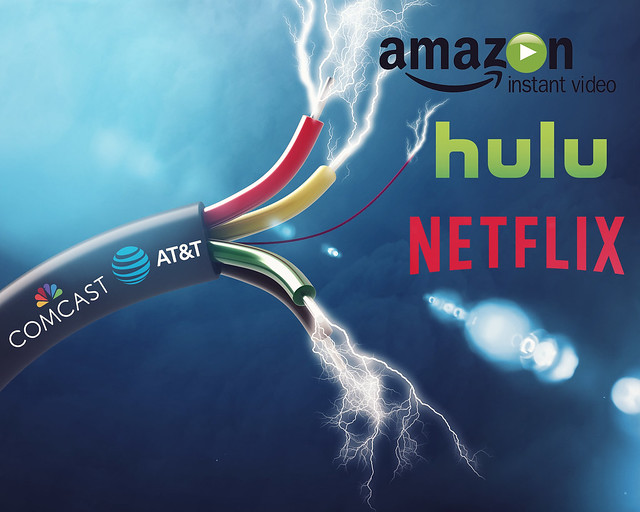
Image via www.vpnsrus.com
Media providers like Netflix, Hulu and Prime Video have taken over the television industry as they each offer thousands of popular TV shows and movies. Each platform is subscription-based; consumers can pay anywhere from $5 to $40 a month for a plan that can be accessed online or through an app. Many consumers have opted toward these platforms over cable because of the low cost and easy accessibility. As a result, these providers have changed the way consumers engage in media.
One way that binge-watching and streaming services have affected the cable industry is that content is in higher demand. Users of these services are able to watch full seasons or series at once, whereas through cable consumers would have to typically wait a week between episodes of a series. 411mania.com wrote, “A survey from 2017 found that 73% of Americans say they’ve gone through multiple TV episodes in one sitting, with the style of watching most popular amongst millennials and Gen-Z.” This style has made consumers almost too impatient for cable television. Along with the availability of entire series, streaming services have the option for no ads, making it easier to cruise through multiple episodes at a time.
Binge-watching has therefore made consumers pickier about the content they choose to watch, which ultimately has had an impact on scripts and producing. Netflix even has a category named “binge-worthy titles.” Previously, TV shows on cable were written to have cliffhangers within episodes for commercial breaks so consumers would feel obligated to know what happens in the rest of the episode. Whereas now, shows are written so there is one big cliffhanger at the end of the episode so consumers feel obliged to watch the next episode. This contributes to the binge-watching cycle. Consumers say to themselves “one more episode” constantly because each episode ends with a cliffhanger they need solved.
Something else that is affected by the shift to subscription-based television platforms is how consumers get their news. Pew Research Center found in a study that 57% of people get their news from TV in 2016, however in 2018 CNBC reported that 57% of consumers subscribe to some sort of television streaming service. Thirty-six percent of those said they had both cable and a streaming service. As the number of consumers with cable begins to decrease, people are turning to online news sites and social media, which has pros and cons. The benefits are that it is a simple and convenient process, but the consequences are that consumers may be finding unreliable news sources. Social media is full of untruthful or biased news, along with some news sites, which influences the quality of news people are receiving. To read more about the impact of online sources on the newspaper industry, click here.
Consumers are not the only ones affected by the binge-watching trend; the streaming services themselves are being impacted by their competitors through licensing. Disney is in the works of creating its own streaming service, Disney+, that will launch in November. Disney+ will be cheaper than Netflix and will feature film series that Netflix does not have the rights to, such as Star Wars and Marvel. These series along with classic Disney films will separate Disney+ from the competition. In all, the industry of TV streaming is impacting the world for consumers and companies. Statistics of the number of users lead people to believe that the binge-watching trend will continue to grow.
